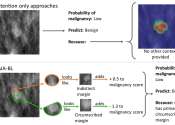How eye imaging technology could help robots and cars see better
Even though robots don't have eyes with retinas, the key to helping them see and interact with the world more naturally and safely may rest in optical coherence tomography (OCT) machines commonly found in the offices of ophthalmologists.
Mar 29, 2022
0
117









